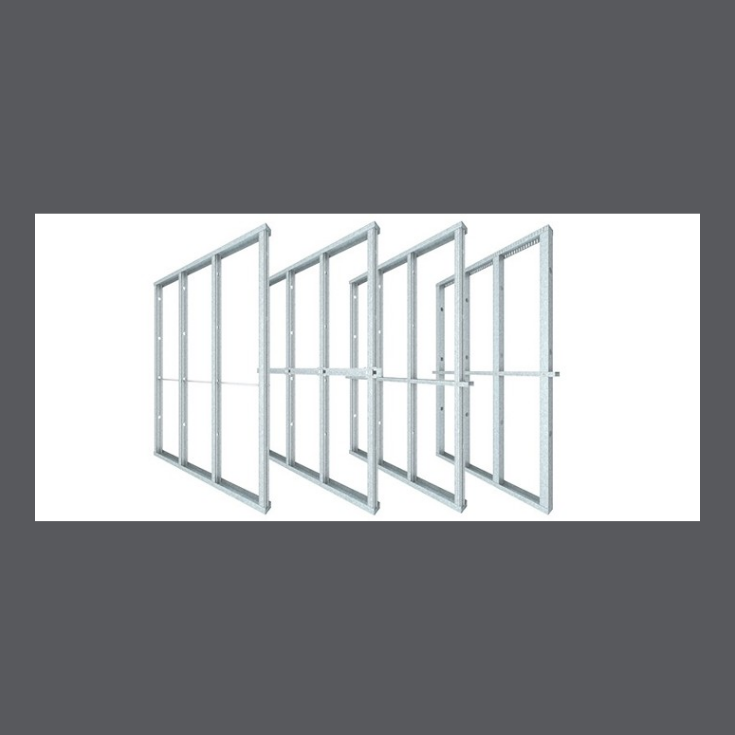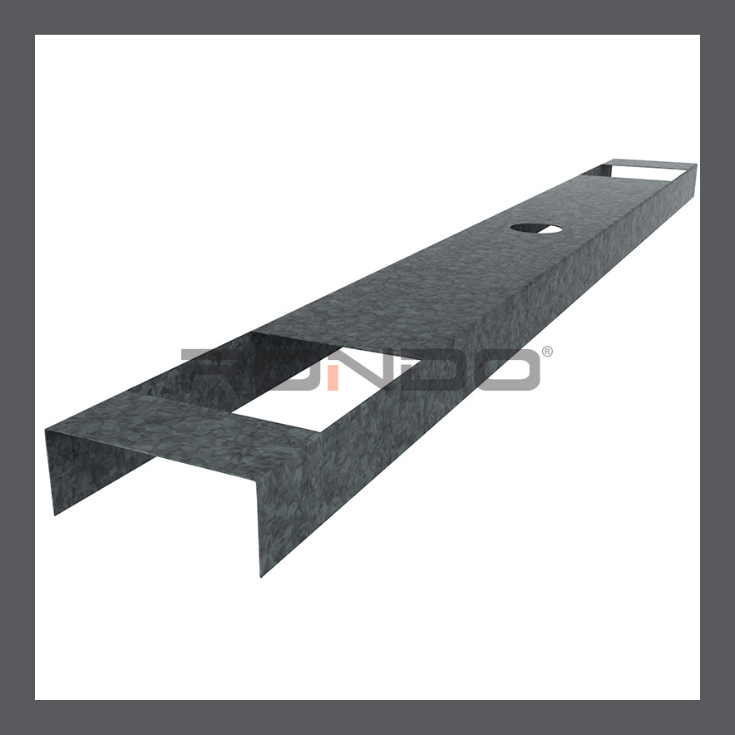Steel Nogging Track for steel stud walls is fitted over the studs prior to installing the top plate. When the wall is square and true the nogging track is lifted to the required height and screwed into position.
The track imparts significant strength and stability to the wall.
Description
Nogging Track is fitted over the studs prior to installing the top plate. When the wall is square and true the nogging track is lifted to the required height and screwed into position.
The track imparts significant strength and stability to the wall.
1. NOGGINGS HELP ACHIEVE COMPLIANCE WITH THE NCC FIRE-RATED WALLS REQUIREMENTS
The National Construction Code (NCC) addresses fire-resistance requirements of lightweight construction in Specification C1.8 Clause 3.4 (b) which states that fire-rated internal or external walls are to be subjected to a static uniformly distributed load test of 0.25kPa.
Rondo includes noggings, as required, in fire-rated walls lined one side designs to ensure that they:
- have the structural adequacy to meet the BCA Specification C1.8 requirements
- comply with the fire tested system
2. NOGGINGS ASSIST IN COMPLIANCE TO NCC STRUCTURAL REQUIREMENTS
The NCC addresses structural adequacy requirements of lightweight construction in Section B. Within this part of the NCC, the minimum design actions to be considered are specified, and include amongst others wind and seismic actions.
Rondo includes noggings, as required, in their lightweight construction designs to ensure that they have the structural adequacy to meet the NCC Section B compliance requirements.
3. NOGGINGS PREVENT ROTATION OF THE WALL STUD WHICH IS A POTENTIAL CAUSE OF NOISE WITHIN THE WALL UNDER STRUCTURAL MOVEMENT:
Without the nogging, there is a greater chance of the wall studs rotating and therefore, increased risk of noise occurring in the wall due to structural movement
4. NOGGINGS PROVIDE LATERAL RELIEF TO THE WALL LININGS, ALLOWING THE HEAD TRACK MORE FREEDOM TO MOVE WITH THE STRUCTURE IT IS FIXED TO, AND LIMITS THE PROPENSITY TO CLAMP THE WALL STUDS AND INDUCE MOVEMENT INTO THE WALL PANELS:
This is an integral part of the overall Rondo design methodology to minimise potential noise issues and does not compromise the performance of the wall.
5. NOGGINGS PROVIDE FOR MORE EFFICIENT DESIGNS
The use of Noggings reduces the unrestrained (torsional/ flexural-torsional) length in a Steel Stud Wall. The greater the unrestrained length, the less efficient the wall design becomes.







